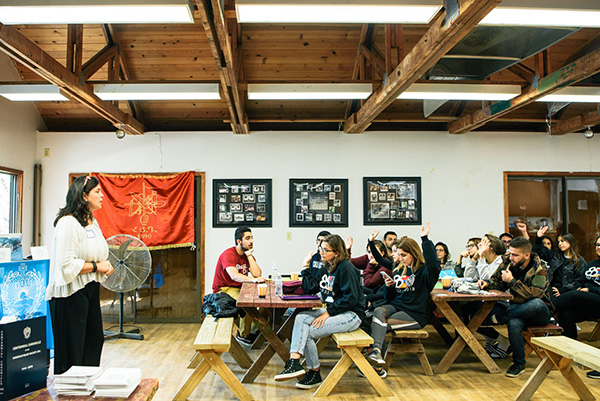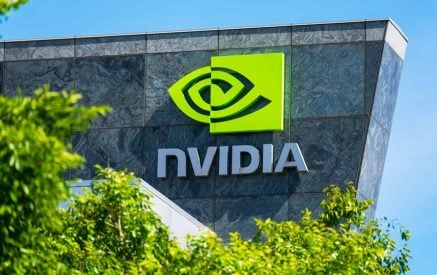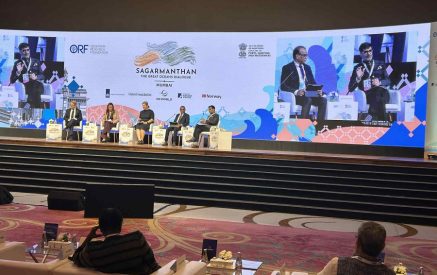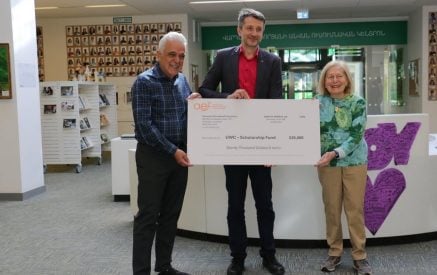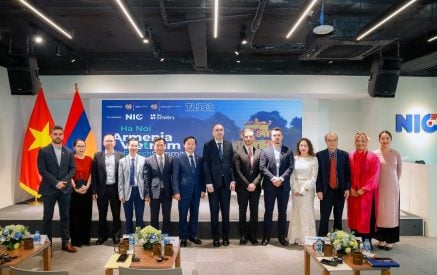The Armenian Weekly. In our communities today, whether it is here in the United States or in other areas of the diaspora, we are constantly reminded of our future—building for the future, preparing for the future or creating a vision for the future. The diaspora seems to live in constant fear of losing our next generation and thus truncating the timeline of our history. When considering this challenge, we tend to look at it in a myopic sense by thinking of our future from the perspective of “my” parish or “my” organization. In other words, we view it from the space that we reside in. If you have a relatively narrow view of the diaspora and your experience is unstable, then you may have a bleak view of our future. Some have a broader or macro view of the nation and observe trends that may only be visible from that view. Whatever your perspective , it is valid because it will influence your contributions, motivation and commitment. This is one of the reasons that a unified and diverse community is important. It allows us a fresh perspective, limits stagnation and introduces innovative thought.
A few years ago, I was asked by a group of young Armenians to pinpoint the biggest threat to our sustainability as a community. My view then (as well as today) is that ignorance (the absence of knowledge) is that threat. Sociologists will tell you as ethnic diasporas mature by generation that intermarriage and a lack of functional knowledge are the biggest challenges. Let’s take a quick look at how knowledge has been transferred in US diaspora generations. The surviving immigrant generation of post-WWI was a product of indigenous knowledge. They learned about Armenian culture, history and church by living it full-time in the villages and cities of historic Armenia. For many of us, they were the primary source. The residual impacts of the genocide were numerous. One of the most immediate was that this generational knowledge transfer would have to happen without the benefit of living on the historic soil of Armenia. That courageous generation took on this challenge by speaking Armenian in the home, establishing schools and establishing homes in neighborhoods with a density that allowed them to help each other. The beneficiaries of this structure were the first generation of American-born Armenians or what are generically called “the greatest generation.” This process continued in the “baby boomer” generation, but there were additional and unique challenges, particularly the use of English as the primary language among American-born Armenians in the home and, as a result of their financial success, the diluting of the original Armenian neighborhoods. This is the environment that my peers grew up in.
Despite the challenges, there was an ethic pride and nationalistic resurgence that encouraged the acquisition of knowledge. While there have been some incredible successes, the overall base of knowledge of each succeeding generation has been negatively impacted. We have always produced scholars and experts, but the general population is less knowledgeable from a heritage and faith perspective. Many years ago as a young delegate to the Prelacy National Representative Assembly, I listened to a man who I dearly respected, Michael Najarian, speak about the impact of ignorance in our communities. He used a term “functional illiteracy” that he feared would pervade in our communities. Essentially, we would function with parish councils and boards of trustees or other organizational rivals, but the working knowledge of the individuals of our history, culture and church would be diminished. This resulting “shell” if unabated can lead to the weakening of our community structure as well as individual assimilation.
During this time in the 70s, 80s and 90s, two new phenomena were introduced that have created new and encouraging dynamics. Immigrants, primarily from the Middle East and Iran, were educated, motivated and committed. Their presence absorbed much of the “illiteracy” that was prevalent in the environment. Of course, integrating diverse backgrounds was challenging. It is fair to say there were some successes and some failures. In a sense the emigration waves have “reset” the clock on the functional knowledge spectrum allowing the community to continue. We speak often of how American-born Armenians lost some of their identity in this “new” environment, but we should also speak about how many American Armenians were motivated and inspired by this replenishment. Rather than being intimidated, many embraced the opportunity.
Read also
The other significant change was the introduction of expanded “immersion” programs. During this time, established ones were expanded and many new ones were introduced. The St. Nersess Summer Studies Program of the Diocese and the Datev Institute of the Prelacy are two examples. By combining very focused education with a social experience, we have built a new generation of very educated “functionally literate” young Armenians who go back to their home parishes and begin to take on roles in the infrastructure. The church has shown leadership in this area. More resources must be applied to these successes. There are similar programs offered by the Diocese, Prelacy, AGBU, ARS and others that are dedicated to the Armenian language, culture and history. In many cases, the result is that the students become more educated than their parents, which is both remarkable and defies the expected longer term trends of a people in a diaspora. These programs are popular, and the return is immediate. Their impact is only limited by the number of young people they can reach. As investments continue, we can expect to see incremental results. If you consider a working knowledge of our identity as an essential element to building a future, then these immersion programs are one of the best investments in our communities. They are attempting to reverse a trend that has infiltrated our communities’ sustainability.
I will always be inspired by Bishop Daniel’s election as Primate in May 2018. There was a genuine sense of excitement among many of our youth. Why? Because of his affiliation for years in these immersion programs, many of the attendees knew him, admired him and considered him their teacher or mentor. When word filtered to many of the communities of his election, young people were informing their parents who he was and how happy they were. How great is that! To me, it doesn’t get any better than that. Here is an example where investment in knowledge not only is satisfying the knowledge appetite of our youth, but has created a dynamic of inspiration for our leaders. Every group that has instituted these types of knowledge-based programs should be actively working to expand and reach more of our young generation. It works, and they love it. Simple as that. It would be interesting to see what percentage of total expenditures these immerse programs have become over time. This should be a top priority.
One of the things that I loved about being in the AYF in my teens was that I was encouraged to read. We had education programs that would initiate our appetite. By reading, I was filling the reservoir with knowledge. I was told by an older gentleman many years ago that if you want to help your people, become educated—both from a professional perspective and as an Armenian. Today, I see thousands of Armenians using their professional skills for the benefit of their communities and Armenia. As parents, we must find a way to raise educated and informed children, not simply in their formal education, but as Armenians. We have churches, organizations, Saturday schools and day schools. Find what works for you, but give your children the gift of knowledge. Encourage them to read our history, to sing our music and dance. Find their connection as we do with other aspects of our children’s lives. It is just as important (perhaps more) than athletic or other activities that may prevent this investment. Like all value-driven behaviors, it starts in the home. In my opinion, Matthew Karanian’s ‘The Armenian Highland’ should be on the coffee table of every Armenian home. Easy to read, beautifully visual and a pictorial view of our history. Important for us, but essential for our children. First they will browse, then they will read and then the pilot light of knowledge will be lit.
We all want a future. We must also recognize that each step we take and each decision (or non-decision) we make, will influence that somewhat vague term called the “future.” When we say we are too busy, it is important to fast forward the impact of that decision. There is no better time than now. The leadership of our communities should embrace all methods—immersion, online, local, regional or national that will fill your children with the substance of knowledge. It is not good enough to stand up and demonstrate once a year on April 24 or grill kebab at a church picnic. These are noble, but our depth must and can improve. It is never too late. Knowledge does not discriminate (neither does ignorance), but it pays a great return on our investment. Let’s build that future with a strong foundation of knowledge that honors the past, learns from it and builds a new tomorrow.
Photo: AYF Senior Seminar 2018 [AYF Eastern Region/Facebook]



















































